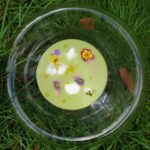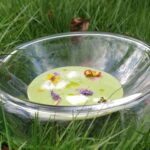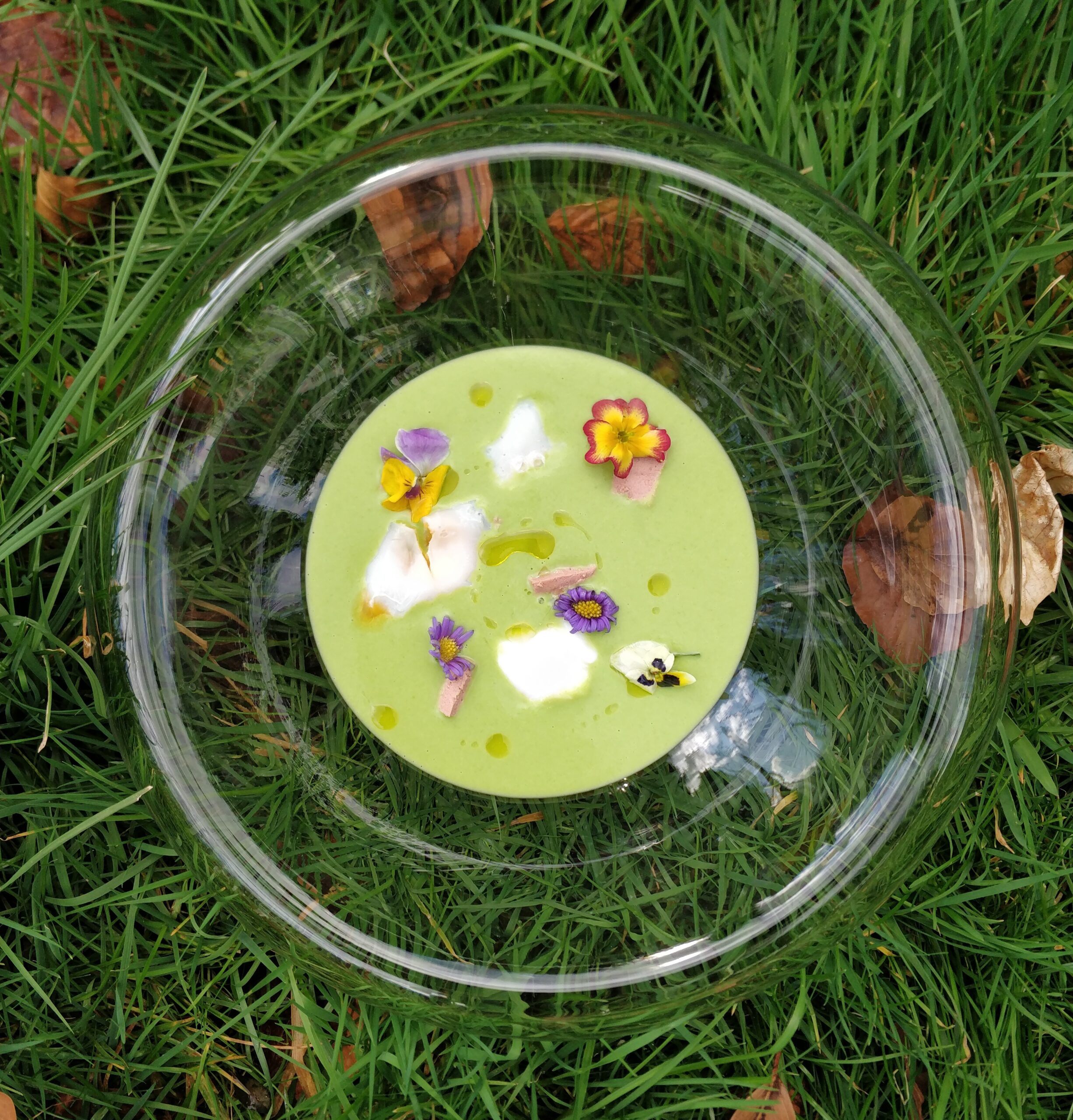[:es]Buenos días,
Pensando ya en la primavera que os parece si preparamos esta receta tan exquisita de crema de guisantes aprovechando que en nada ya tendremos en el mercado «con suerte» guisante lágrima.
El también conocido como ‘caviar vegetal’ atesora un sabor delicado y una textura única. Con una temporada muy corta, su recolección es muy exigente y su tratamiento en cocina requiere pericia y respeto.
El guisante lagrima no necesita cocinarse, su particular textura, en la que lo crujiente de la piel da paso a un interesante interior líquido. Ambos factores propician que la mejor forma de tratarlo en la cocina sea no tratarlo. O, al menos, de hacerlo muy poco.
El guisante lágrima comienza a plantarse en otoño. En concreto, a finales de octubre o principios de noviembre, en un periodo corto de buen tiempo que según la tradición popular se conoce como ‘Veranillo de San Martín’. Hasta que llegue el momento óptimo en el que se recolecte,entre finales de febrero y principios de marzo. ( Inf. Apicius).
La crema la haremos con guisante común y a poder ser congelado y si tenéis guisante lagrima ya sería lo más!! A la hora de servir la crema saltearlos un nada o incluso ponerlos sin cocinar sobre la crema!
Besos y feliz día de la mujer!


- 500 grs de guisantes frescos o congelados (finos).
- 250 ml caldo de pollo.
- 75 ml nata liquida.
- Sal.
- 8 huevos de codorniz.
- Agua.
- Sal y vinagre de vino blanco.
- 80 g de micuit de foie.
- Sal y pimienta blanca.
- Zumo de limón.
- Sal
- 50 g guisante lagrima ( opcional)
- Aceite de trufa
- Cocer los guisantes a la inglesa( abundante agua hirviendo) y una vez cocidos hacer un puré con muy poca agua.
- Mezclar los ingredientes restantes, primero el caldo (no muy caliente, templado) y a continuación la nata a temperatura ambiente.
- Poner a punto de sal, colar y enfriar rápidamente. Reservar hasta la hora de servir.
- Cocer en agua con sal y un chorro de vinagre de vino blanco los huevos de codorniz sacándolos con mucho cuidado de la cáscara y añadiéndolos al agua muy despacio para evitar que se rompan.
- Dejarlos hirviendo durante 30 segundos y rápidamente a un bol con agua y hielo. Limpiar las posibles barbas que cuelgan y guardarlos hasta la hora de utilizar en un recipiente cubiertos con agua limpia y bien fría.
- Cortar en dados pequeños el micuit de foie.
- Desgranar los guisantes lágrima y lavarlos con cuidado de no romperlos.
- A la hora de servir disponer la crema caliente ( no demasiado) en un plato hondo, los huevos (meter y sacar en agua hirviendo a la hora de servir), trozos de micuit de foie y los guisantes lagrima.
- Terminar con unas gotas muy sutiles de aceite de trufa y decorar con flores comestibles.
Today I bring you this exquisite recipe of cream of peas taking advantage of nothing and we will have in the market «Hopefully» pea tear.
Also known as ‘ vegetable caviar ‘, it treasures a delicate flavor and a unique texture. With a very short season, its collection is very demanding and its treatment in kitchen requires expertise and respect.
The tear pea does not need to be cooked, its particular texture, in which the crispness of the skin gives way to an interesting liquid interior. Both factors encourage the best way to treat it in the kitchen is not to treat it. Or at least to do very little
The tear pea begins to be planted in autumn. In particular, at the end of October or beginning of November, in a short period of good weather that according to the popular tradition is known as ‘ Veranillo de San Martín ‘. Until the optimum time is collected, between the end of February and the beginning of March. Inf. Apicius).
The cream we will make with common pea and be able to be frozen and if you have pea tear and would be the most! When serving the cream sauté them a nothing or even put them without cooking on the cream!
Kisses and happy Women’s Day!


- 500 g of fresh or frozen peas (fine).
- 250 ml chicken broth.
- 75 ml liquid cream.
- Salt.
- 8 quail eggs.
- Water.
- Salt and white wine vinegar.
- 60 g of foie micuit.
- Salt and white pepper.
- Lemon juice.
- Salt
- 50 g pea tear (optional)
- Truffle oil
- Cook the peas in the English (abundant boiling water) and once cooked make a puree with very little water.
- Mix the remaining ingredients, first the broth (not very hot, lukewarm) and then the cream at room temperature.
- Set salt, strain and cool quickly. Book until serving time.
- Boil in water with salt and a stream of white wine vinegar The quail eggs creatopia very carefully from the shell and by adding them to the water very slowly to prevent them from breaking.
- Leave them boiling for 30 seconds and quickly to a bowl with water and ice. Clean up any beards that hang and store them until the time of use in a container covered with clean, well-cold water.
- Cut into small dice the micuit of foie.
- Peel the tear peas and wash them very carefully not to break them.
- At the time of serving arrange the hot cream in a bowl, in the center, on the egg poche introduced in hot water to warm it and the micuit of foie around.
[:]
